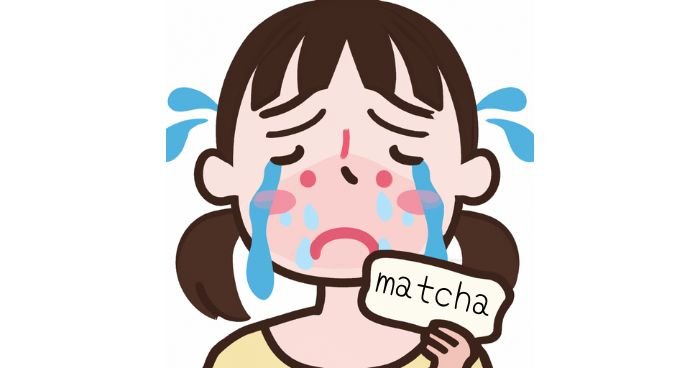You finally jump on the matcha bandwagon. You know, that green stuff influencers froth up while smiling way too much. You’re ready to zen out and feel like a 16th-century Kyoto tea master.
But no. You sip it. Your face?
“What the heck? Did someone drop a bar of Dove in this?”
Soap. It tastes like soap.
You’ve been matcha-betrayed. Relax, my friend. It’s not you; it’s… kind of you. Let me explain.
The Science Behind the Suds (Keep Up, This is Important)
Alright, let’s put on our lab coats. Matcha’s magical flavor comes from three main things:
- Chlorophyll – The stuff that makes plants green. High-quality matcha is rich in it because the tea leaves are shaded before harvest. More chlorophyll = deep green color = earthy taste.
- Amino Acids (L-theanine) – These are the good guys. They make matcha smooth and give that calm, focused energy.
- Catechins (Polyphenols) – Antioxidants that fight free radicals but also add bitterness if overdone.
Now here’s the kicker: if these elements get out of balance, your matcha goes sideways. Too many catechins? Bitter soap. Low-quality chlorophyll? Sad soap.
It’s like a band. L-theanine is the lead singer, chlorophyll is the guitar, and catechins are the drummer. If the drummer plays too loud… you get soap.
Bad Matcha = Sad Soap
Not all matcha is created equal. Let’s break it down like this:
- Ceremonial Grade Matcha: The top-tier, tea ceremony-approved stuff. It’s vibrant green, smooth, and has that creamy umami kick. Check out the best matcha our real customers rave about so much.
- Culinary Grade Matcha: This is what you find in $2 lattes. It’s dull, bitter, and… yeah, soapy.
Look, you bought $4 matcha at the grocery store and expected Kyoto heaven in a cup? That’s like buying instant ramen and complaining it’s not Michelin star. My guy, quality matters!
How You Made It Might Be the Real Problem (I’m Looking at You)
If you’re preparing matcha wrong, you might be sabotaging yourself.
A) Water Temperature
Boiling water (100°C)? Matcha hates that. It’s delicate, like a geisha in silk slippers, not a burger on a grill.
- Pro Tip: Stick to 70-80°C. Warm but not scalding.
It’s like pouring boiling oil over ice cream and wondering why it melted. Come on!
B) Tools of the Trade
- Bamboo whisk (chasen) = frothy perfection.
- Fork or spoon = matcha clumps that taste like straight powder.
Translation: You can’t stir matcha like instant coffee and expect magic. Treat it with respect!
C) Too Much Powder
1-2 grams of matcha is plenty for one cup. Go overboard, and you’re drinking liquid grass.
Your Taste Buds Need a Reality Check
Let’s face it, matcha isn’t for everyone straight out the gate.
- If you’re used to sugar-packed frappes, matcha might taste like your backyard lawn.
- Matcha is an acquired taste – earthy, umami, a little bitter, with a natural sweetness.
Think of it like sushi. The first time you ate raw fish, you probably said, “Why am I eating this cold, slippery thing?” But give it time, and boom – you’re a sushi snob.
The Cultural Context: Matcha Isn’t a Quick Fix
In Japan, matcha is art. It’s a tea ceremony, a meditation, and a craft passed down through generations. You don’t just throw powder in water. You whisk it, breathe it, respect it.
Meanwhile, you’re dumping matcha into pancakes, smoothies, and – God help us – protein shakes. You think Kyoto’s monks would do that? Nah, bro. They’d probably karate-chop your blender.
Fixing the Soap Situation: Your Matcha Game Plan
Let’s get serious. Here’s how you make matcha taste like it’s supposed to:
- Buy Quality Matcha: Go for ceremonial grade. If it’s neon green and comes from Japan, you’re on the right track.
- Water Temperature: 70-80°C. Don’t boil the poor leaves to death.
- Use a Bamboo Whisk: A chasen isn’t just for show. It creates that creamy froth.
- Measure Correctly: 1-2g of matcha per serving. Don’t go nuts.
- Be Patient with Your Palate: Sip it slowly. Notice the earthiness, the sweet undertones.
Final Thoughts: Maybe It’s Not the Matcha, It’s You
If after all this, matcha still tastes like soap, maybe… just maybe, it’s not your thing. And that’s fine. But don’t blame the tea.
Listen, matcha isn’t for everyone. Some people are ready for that Japanese Zen. Others need to stick to their caramel macchiatos and call it a day. No shame, just facts.
So there you go! Fix your matcha mistakes, respect the process, and soon, you’ll be whisking like a tea master. No soap in sight.


